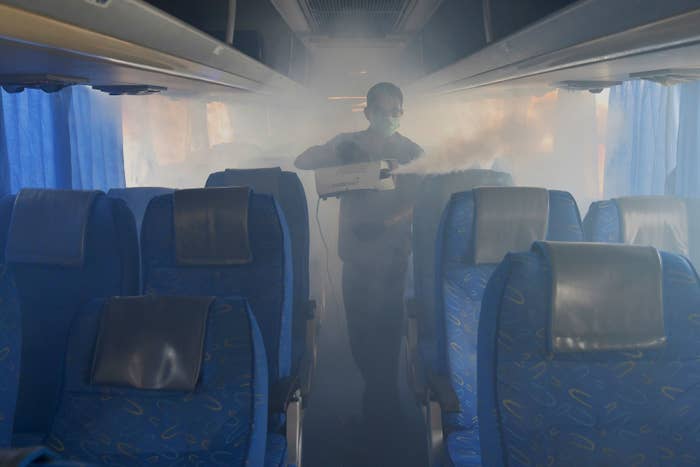
The journalists at BuzzFeed News are proud to bring you trustworthy and relevant reporting about the coronavirus. To help keep this news free, become a member and sign up for our newsletter, Outbreak Today.
NEW DELHI — For months, all Mrinal Sabharwal and his wife Shelly Dhingra had talked about was their long-planned trip to Europe. They’d been saving for the four years since they were married and finally had enough vacation time to spend three weeks in Paris, Barcelona, and Lisbon.
But four days into their vacation, they realized they needed to come home, as Western Europe went into lockdown over the coronavirus outbreak.
In the early hours of Monday, March 16, they flew back into New Delhi. That was when their ordeal began.
“We learned on the news that Barcelona was under lockdown, Portugal had closed its borders,” Sabharwal told BuzzFeed News over the phone from self-quarantine at their home in New Delhi. “We decided to take the first flight home. I downloaded the Indian government’s form on the flight, and we reported ourselves to the airport authorities as soon as we landed — we wanted to get tested. There was no way we could go home to our elderly parents without getting a test first.”
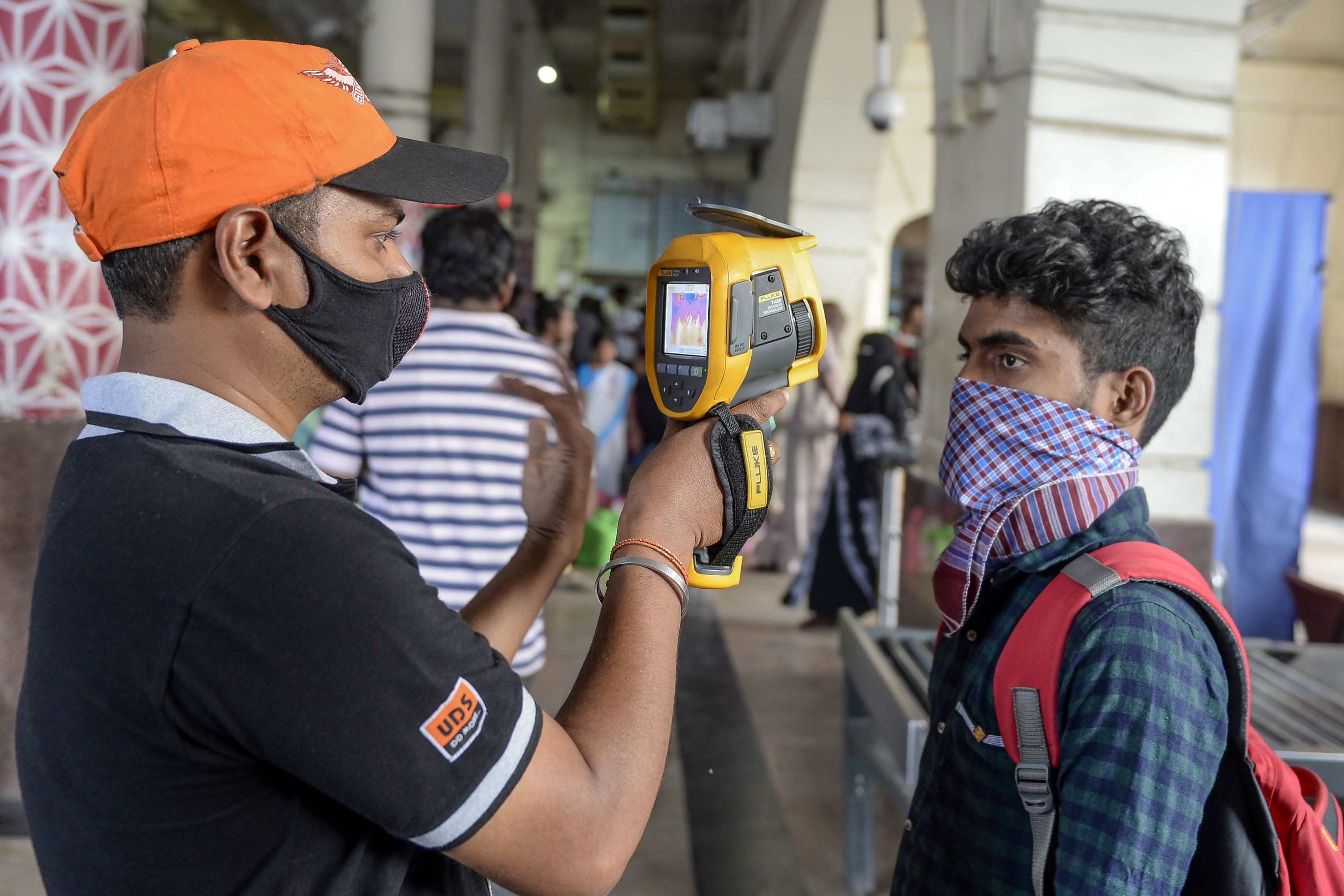
The global coronavirus pandemic appears to have missed India so far: As of March 19, the country had recorded only 148 confirmed cases, despite a large and mobile population of over 1.2 billion. The World Health Organization (WHO) has praised India’s response.
Total cases and deaths by country.
The government has embarked on an aggressive airport screening program — Indian airports have screened almost 1.4 million people so far, and cities like Mumbai are preparing to screen and quarantine another 26,000 people arriving from the Gulf countries. In Maharashtra, a state in western India, the government has come up with a novel way to mark patients showing symptoms of the novel coronavirus — by stamping them with indelible ink to ensure they are sent home if they venture outdoors. Sabharwal and Dhingra are among 40,000 Indians presently under quarantine.
But there are fears that the government’s selective testing may have underestimated the spread of the virus. India had tested only 9,100 people by March 16.
Sabharwal and Dhingra’s experience at Indira Gandhi International Airport showed how even screening passengers at airports is not enough, if quarantine centers are not prepared to handle travelers as human beings panicking at the thought of disease and cross-contamination, instead of troublesome virus carriers.
At the airport, the couple were among a crowd of approximately 40 people waiting to be screened or tested. An exhausted Dhingra asked airport staff for a drink of water. She was told to drink from the faucet in the bathroom. “My wife was shocked,” Sabharwal said. “India is not a First World country — water in our lavatories is not potable. When she pointed this out to the staff, they told her they didn’t want her to ‘infect the drinking water.’”
Things only got worse. A few hours later, the group was herded into a bus to be taken to what they were told was a testing facility on the city limits. But the facility turned out to be former police barracks that had been converted into a quarantine center only 24 hours earlier. Upon arrival, the bus was surrounded by police officers. Not a single medic was present.
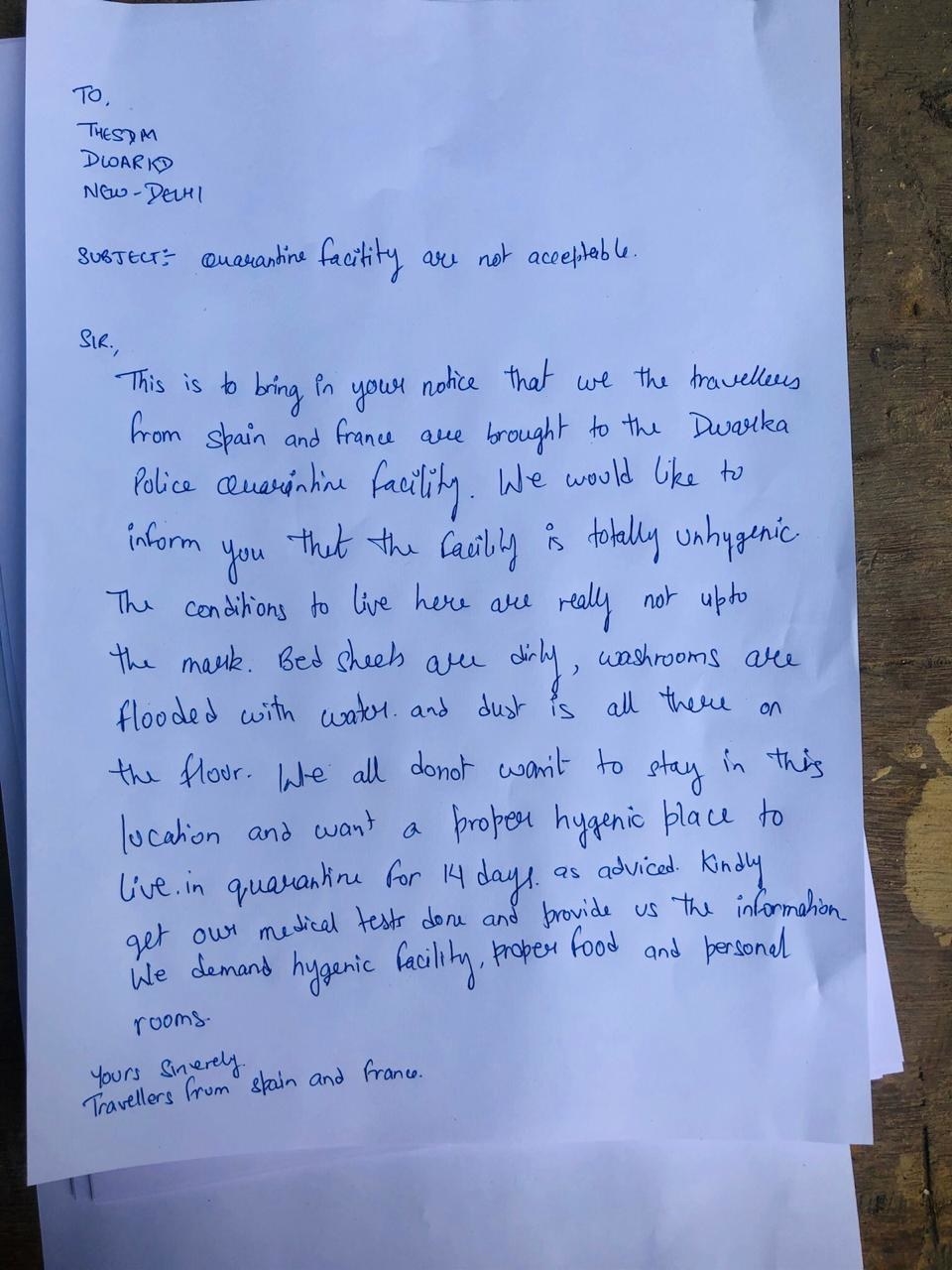
“I tried to open the door and the police men rushed toward the door to shut it, screaming, 'Corona! Corona will come out!'” Dhingra said.
More unpleasant surprises awaited the group when, two hours later, they were finally let into the building. “The toilets were flooded, the bedsheets stained. There weren’t even separate dorms for men and women — how was my wife supposed to sleep in the same room as seven strange men? It made no sense,” said Sabharwal. As the group waited, another busload of passengers arrived at the facility, then another — in total, the passengers were told by police officers outside the building, over 200 people were expected to be housed at the quarantine facility, which had only three toilets.
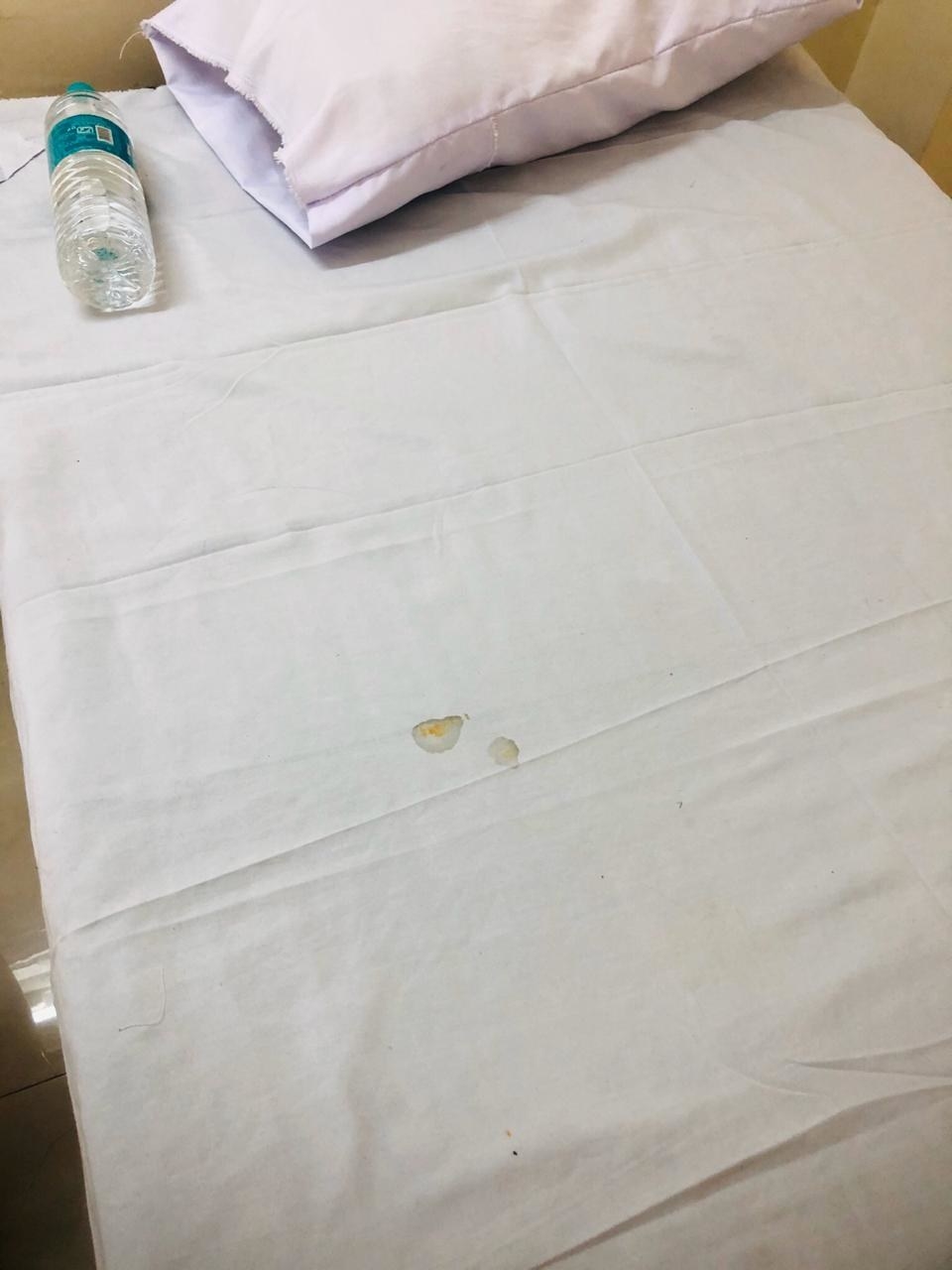
The WHO says that while there are no universal standards regarding the infrastructure for a quarantine facility, at the bare minimum, quarantine wards should not enhance potential transmission. Travelers should be provided with adequate food, water, sleeping arrangements and clothing, protection for baggage and other possessions, appropriate medical treatment, and means of necessary communication. The guidelines encourage authorities to communicate with travelers transparently and clearly to avoid panic.
“Travellers should be treated, with respect for their dignity, human rights and fundamental freedoms and minimize any discomfort or distress associated with such measures, including by treating all travellers with courtesy and respect; taking into consideration the gender, sociocultural, ethnic or religious concerns of traveller,” the guidelines state.
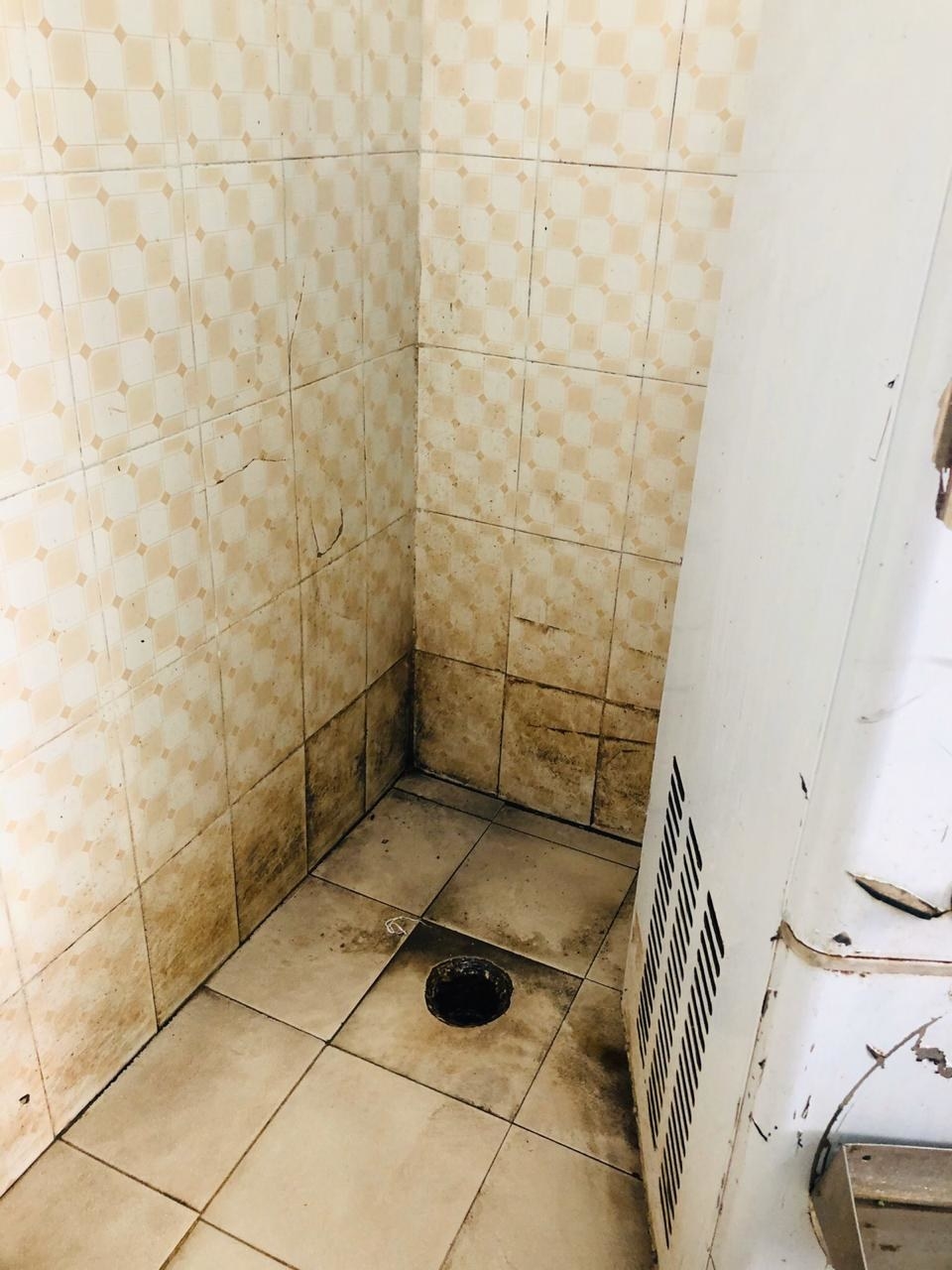
There are similarities between India and the US in how sections of the media and political leaders are responding to the coronavirus outbreak. Fox News and Donald Trump have embraced xenophobia to defend against the virus, which the US president now exclusively refers to as “the Chinese virus.”
In India, community transmission is thought to still be low, and most affected cases are believed to have been “imported” from coronavirus-affected countries. So the pandemic has become a way to blame “elite” Indians who can afford to travel outside the country — and now, who complain about quarantine facilities and the government’s lack of preparedness, for “giving India a bad name.”
On Wednesday, an Indian news station ran a segment named “FLYERS THROW TANTRUMS! CHAOS AT INTN'L AIRPORT.” The channel, CNN-IBN, aired closely edited footage of Sabharwal and Dhingra’s group of travelers standing before an immigration desk.
“Is this the sort of behavior that we expect Indian citizens to display? Just take a...just listen to this!” the news anchor says in the video. The accompanying audio is an incoherent rumble from the crowd until one man is clearly heard screaming: “Shoot us! Shoot us then!”
The edited video was then shared multiple times on WhatsApp groups and Twitter — until Indira Gandhi International Airport finally tweeted to offer reassurances that the airport was now functioning smoothly.
“I was there when this happened. One of the airport security guards behind the immigration officers told us that we were infected, and if we didn’t behave ourselves, we would be shot,” Sabharwal said. “Just because we went to Europe doesn’t make us rich brats throwing tantrums. Some of us had saved for years to travel. Others were students who were studying on loans or scholarships. One guy had taken his elderly parents along with his wife and daughter — why is the government and media trying to portray us like this?”
Someone from Sabharwal’s group tweeted images of the facility, but then almost immediately they were inundated with comments blaming the passengers.
“You have some time, why don’t you clean the facility yourself?” said one.
@NavyaDua @PMOIndia @WHO @CISFHQrs Atleast it is clean ,you cannot expect a 5 star facility for free,why did you travel in this times knowing very well the situation? Just criticising to give India bad name.
@NavyaDua @PMOIndia @WHO @CISFHQrs What is wrong with this? Did you expect a 5-star treatment & infra in this crisis?? Please thank the Government that they have this facility otherwise strong possibility of you infecting your family, friends, and acquaintance.
@NavyaDua @PMOIndia @WHO @CISFHQrs Hey woman - This is a Quarantine facility in Pakistan. Still complaining about what GOI has arranged?? Pakistan's spike in coronavirus cases raises quarantine concerns https://t.co/lWMtQoG5WK
Sabharwal told BuzzFeed News that the criticism was frustrating because it missed the point — passengers taken to the facility were concerned about cross-contamination in an already terrifying situation.
“The problem was never that the facility was poorly furnished," Sabharwal said. “We’ve grown up in India, my wife and I have traveled across the country, slept on floors, used Indian toilets — we’re OK with basic. We don’t need luxury. But we wanted a hygienic proper isolation ward where at least we would not all infect one another.”
Not everyone has had the same experience. While the police barracks quarantine was unsanitary and hostile, Sabharwal said his friends who were taken to a religious hostel in a different part of New Delhi found their quarantine perfectly clean and safe. In Mumbai too, passengers have both complained about and praised quarantine facilities. In the south Indian state of Kerala, people in quarantine were served steaming hot banana fritters, tea, boiled eggs, and bread.
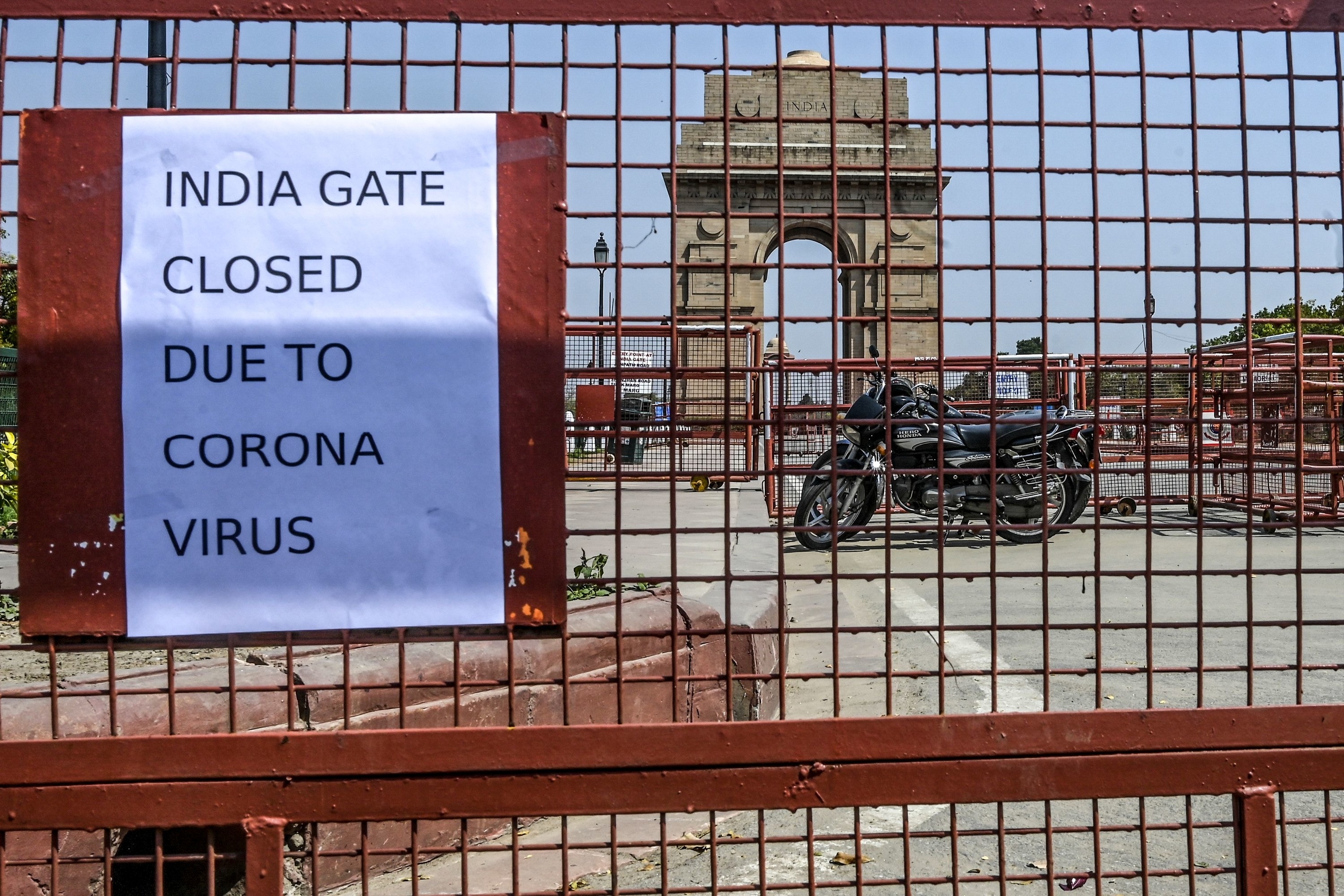
On Monday afternoon, nearly 12 hours after Sabharwal and Dhingra landed on Indian soil, 53 testing kits arrived at the quarantine facility, despite there being 200 people who had just arrived from coronavirus-affected countries. Dhingra said the quarantine officers told her those were all the tests immediately available, and more would come later. At this point, she said, the group was exhausted, hungry, and feeling defeated.
A health worker struggling to seal a sample taking at the quarantine center, before dropping the swab on the floor.
The travelers who could not be tested, and also did not wish to stay at the police barracks, were given the option of checking in to three hotels near the airport — with the caveat that they would have to pay for 14 days of isolation up front, regardless of what their tests eventually said. Sabharwal and Dhingra refused to check in at the hotel.
“We just wanted to get our tests as soon as possible, and we knew that would only happen at the quarantine facility,” he said. Dhingra, who is claustrophobic, added that she was worried about the possibility of being separated from Sabharwal at the hotel quarantine. Sabharwal also has high blood pressure, and the couple hoped that even if they were isolated from the crowd, they would be able to look after one another.
At the police barracks, several passengers who had had their passports taken away by airport authorities were growing irate. They were Indian citizens, but recent news cycles in the cities of Bengaluru had mentioned quarantined patients escaping isolation, something authorities feared might happen again. Others were thirsty and starving, desperate to know when more tests would come, and when they would finally be free to go home. Finally, in the early hours of Tuesday, Sabharwal said, he and his wife were told to go home — they had no fever, and their swab results would take time. Travelers had also been given food and water by this time.
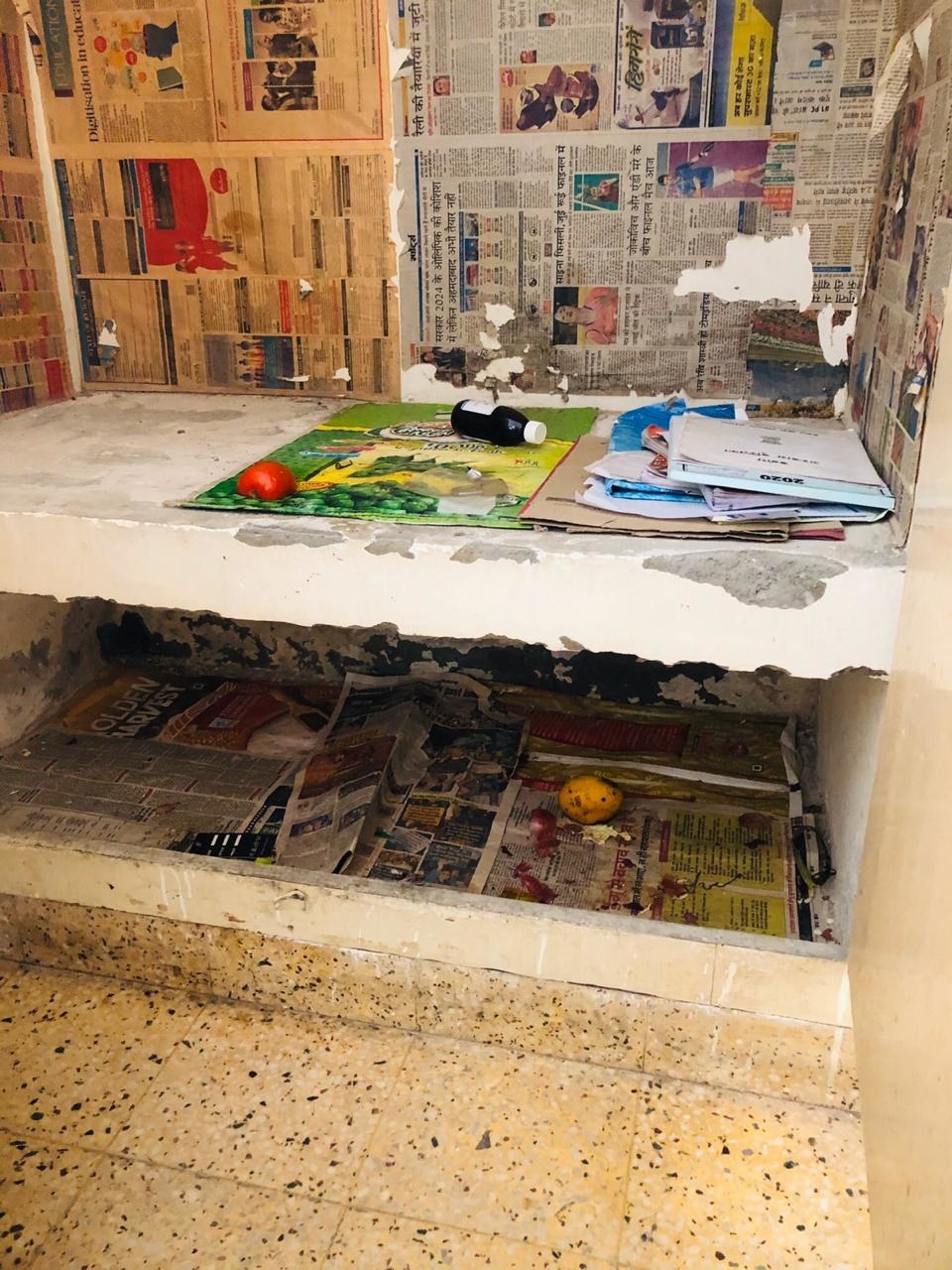
“We still weren’t fully convinced about the veracity of those tests, so we sent our parents to stay with other relatives,” he said. “I’ve been trying to trace those results since the morning, and no lab in India seems to have them.”
Sabharwal said he had reached out to multiple official bodies including the airport authorities who originally accompanied them to the quarantine facility, the National Center for Disaster Control, a hospital in New Delhi which is collecting the tests, and the National Institute of Virology where he was told all the tests will eventually be sent — no one knew where his or his wife’s samples were.
“One of the officers I spoke to even said, ‘Are you sure you’ve been tested?’ I wouldn’t be surprised to learn that India is underreporting coronavirus numbers now that I’ve seen this happen myself,” he said.●

